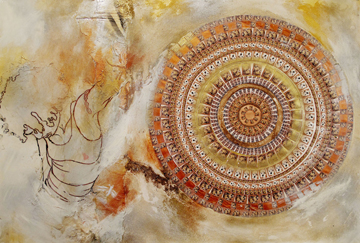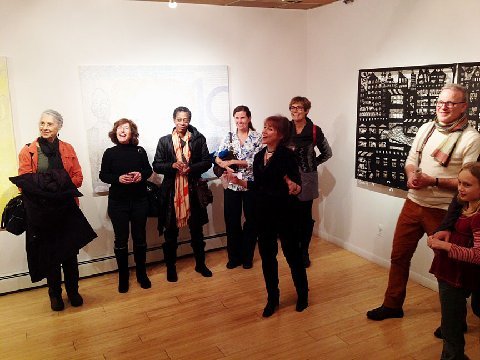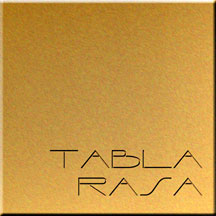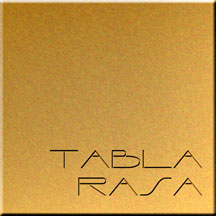|
TABLA RASA GALLERY
presents
Artists talk OBSESSION
Sunday, March 23, 2014
2:30 - 4:00 pm
TABLA RASA GALLERY
224 48 Street (between 2nd & 3rd Avenues)
Brooklyn, NY 11220
718. 833-9100
info@TablaRasaGallery.com
http://www.tablarasagallery.com/
FREE
General gallery hours: 1:00 - 5:00 pm
THURSDAY, FRIDAY & SATURDAY
Call 718.833.9100 for events and schedule updates.
PLEASE NOTE GALLERY WILL BE CLOSED on Saturday, MARCH 22

Pamella Allen, Me Mandala
 * *
Artists at the opening reception of OBSESSION
Left to right: Ellen Grossman, Jenna Lash, Pamella Allen, Melissa Zexter,
Audrey Anastasi, Director, Beatrice Coron, Peter Gergely

Beatrice Coron, Peacock
On March 23, 2014, as part of the closing reception of the current exhibition, OBSESSION, Tabla Rasa Gallery (located at 224 48 Street between 2/3 Aves. in Sunset Park, Brooklyn) will present "Artists talk Obsession." In this revealing talk about obsession, a diverse group of artists will open a window to their creative process and break down the many manifestations that obsession has taken in the creation of their works. Pamella Allen, accomplished Brooklyn artist and educator will lead the discussion. Joining the panel is Dr. Eva Mihovich, distinguished Senior Psychologist at the Rusk Institute of Rehabilitation Medicine, NYU Langone Medical Center and practicing artist, who will explore the relationship between meditation, psychology and art.After the panel discussion, there will be questions and answers.
*
Participating panelists include:
Pamella Allen
Beatrice Coron
Ellen Grossman
Jenna Lash
Dr. Eva G. Mihovich
___________________
info@TablaRasaGallery.com
http://www.tablarasagallery.com/
_____________________
ARTIST/PANELIST STATEMENTS
Pamella Allen
To create my Mandals, I incorporate my own archetypal images by making reproductions of a selection of my most personal intuitive ink and charcoal drawings (created over the past 20 years) and in effect; re-painting them into the body of the mandala to create a rhythm or a mantra with an inevitable message. In my effort to mirror the ritual and therapeutic uses of the mandala in Buddhist, Hindu and Native American cultures throughout the centuries; I use my own archetypal images, the motion of repetitive form, the written word, color and texture to create a place of “One~ness” for meditation, expression and actualization within the confines of “the perfect circle” to mirror the beauty of the Supernova~ after its devastating explosion.
Beatrice Coron
Stories explain everything, from mythical legends to journalistic reports, from marketing strategies to political ideologies: the story is always for free, and it's the bait, the cure and the hope.
For the last 15 years, I have been exploring visual storytelling in artist books, paper cutting and public art. Collecting memories from individuals and communities, I stage narrative allegories in silhouette to create a dialogue with the viewer in playful fantasies.
These visual chronicles record archetypal stories that transcend time and space. My goal is to invite the public to pause and bring their own ideas finding personal interpretation to reclaim their imaginative powers.
Ellen Grossman
These drawings reference topography, fluidity and tactile associations. The flows, the folds, the ripples and the crosscurrents build up, suggesting that which is common to water currents, geologic change and the wind made visible.
Time also flows. At first I recorded, on the bottom edge of each drawing, each date that I worked on it, calling attention to the process and evolution of the image. This prompted questions about which section was drawn which day, usually accompanied by a laugh. In 2005, taking up the challenge, I started to record date and time at the start of each line and again at line's end. This provoked questions about how many hours the drawings took to make, so, pushing absurdity, the notations evolved to include running subtotals and totals up to that day. This can be daunting and that's part of the point: written numbers build up, forcing the lines to fan out, reading at first glance as texture, radically affecting how the drawings evolve.
As in science recording observations can alter results.
Originally I used this topographic drawing method of building surface contour as a way of re-enacting how systems build up as I draw each line in response to the line just drawn. Sometimes I am following my impulses to exaggerate and very often a small unsteady hand quiver initiates a whole new cascading change in the surface. I build on mistakes.
Ritualistically I am relating this activity to the slow geologic build up of sedimentation to form the strata of rocks.
Or a slowing down of the violent interacting forces of the formation of the universe.
Or the invisible dynamics of convective wind and weather.
Or capturing a momentary image of liquid flow.
By extension I am also contemplating how human interactions build up and develop.
And mapping and telegraphing the sense of touch through the sense of sight.
Jenna Lash
“I explore global culture through my art. One marker for me is to use each country’s currency as a visual compass. This I have done for many years. On these sojourns I try to connect with those I encounter whether they are people I meet from different countries, or their iconography. The more I paint them, the more insight I gain.
The creative act is a magical process for me, and a deeply personal one. I continue to learn about the world, often in unexpected ways. And I am most often surprised by what I learn about myself.
Eva G. Mihovich
Over the past 30 years Western Psychology has been increasingly influenced by Buddhist theory and practice. Buddhist meditation has been integrated into some forms of psychotherapeutic practice and its effects have been researched fairly extensively.
Buddhist art reflects the both the aesthetics and underlying philosophy of its roots. Meditation also can be integrated into the practice of art, leading to a particularly expressionistic form of creativity. Sumi-e, or Japanese brush painting, is particularly illustrative of this blending of mental/spiritual practice and art.
______________________________
Additional information ABOUT Dr. Mihovich:
Eva G. Mihovich has been a painter in the Sumi-E tradition (Asian Brush Painting) for over 20 years. She is a founder and past president of the Metro New York Chapter of the Sumi –E Society of America and has exhibited widely.
Besides her work as Senior Psychologist at the Rusk Institute of Rehabilitation Medicine, NYU Langone Medical Center, she is also a clinical instructor at the NYU School of Medicine. Dr. Mihovich has been in private practice as a clinical psychologist in Park Slope for over 30 years.
******************************************************
Directions to Tabla Rasa Gallery)
The gallery is located two express subway stops from Manhattan on the "D" or "N" train to 36th Street Station, plus one "R" stop to 45th Street (or a just few short "R" stops beyond Park Slope).
By car, Tabla Rasa is on 48th St between 2nd and 3rd Aves, Brooklyn. Ample street parking is available.
********************************************************
About Tabla Rasa Gallery
Tabla Rasa Gallery is located in the burgeoning art destination of Sunset Park, Brooklyn. The gallery is known for their consistently stunning exhibitions. Within the 4000 square foot turn of the century carriage house, the gallery exhibits primary and secondary market artwork by emerging, mid-career, and established artists, in all media, including painting, sculpture, installation, drawing, print media, digital, film and video.
*
Exhibitions are free and open to the public. It is recommended to call 718.833.9100 for events and schedule updates.
|


 *
*

